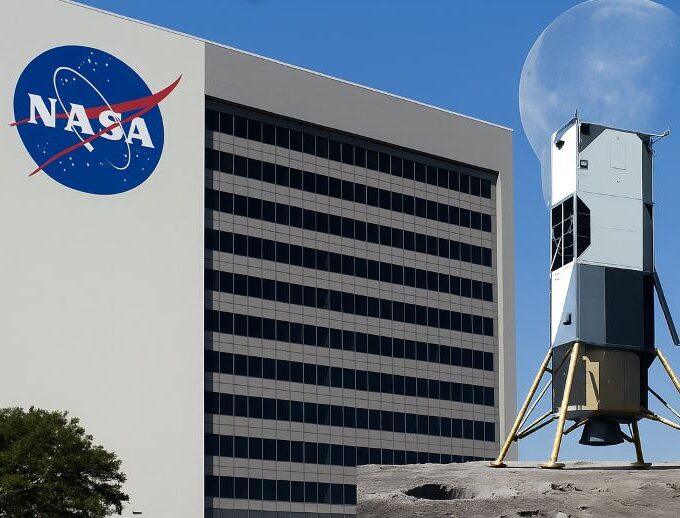When the Trump administration initiated a comprehensive review of SpaceX contracts due to policy differences, what seemed like a simple administrative intervention quickly evolved into a stress test of America’s space strategy foundations. The review revealed an awkward reality: even with full executive power, the government found it difficult to shake off its deep entanglement with Elon Musk’s company. This predicament was not accidental, but a natural result of intertwining legal constraints, technological monopolies, and real-world interests.
Legal and Contractual Rigidities: The Cost of Breach is Far Greater Than Expected
The legal design of government contracts is like a precisely interlocking gear system: once activated, it is difficult to stop at will. During the review, the Trump team discovered that 17 out of the 23 core contracts SpaceX had signed with the federal government included termination clauses that were “nearly impossible to break.” For example, NASA’s commercial crew contract clearly stated that if the government unilaterally terminates the partnership, it would have to pay a penalty of 120% of the costs already incurred (approximately $4.8 billion at the current progress) and also bear the reserve funds SpaceX invested to cope with project delays (around $1.2 billion). Such punitive clauses are common in the aerospace industry and were originally designed to ensure companies could make long-term investments in R&D cycles lasting decades. However, these clauses have now become a huge obstacle for the government to disengage.
A deeper legal dilemma emerged with regard to the continuity of projects. The Pentagon’s assessment report highlighted that SpaceX’s “National Security Space Launch” (NSSL) contract involves the maintenance of 12 active military satellites, which control the U.S. military’s global navigation and missile early warning systems. According to Chapter 49 of the Federal Acquisition Regulation, terminating national security-related projects requires dual approval from the military committees of both houses of Congress and must provide “compelling evidence that alternative options would pose major security risks.” Furthermore, the Air Force Space Command’s testimony revealed that even if an alternative program were initiated, it would take at least 78 months to certify a new supplier—meaning that by 2029, the U.S. military’s satellite launch and maintenance capabilities would face substantial paralysis.
The legal constraints also extend to international obligations. As a partner in the International Space Station (ISS) program, the U.S. would have to pay an annual compensation of about $350 million to Russia, the EU, Japan, and other partners if the termination of SpaceX contracts leads to a disruption in crew transportation. This stems from the ISS agreement’s provision of “equal access for all member states.” This chain reaction led the review team to realize that unilateral contract termination could not only result in domestic legal liabilities but also damage America’s international reputation.
Technological Moats and Deep Integration with National Security
SpaceX’s technological barriers in the aerospace field have made it an “irremovable component” of the U.S. national security system. The review report revealed that the company possesses three “asymmetric technological advantages”: the Merlin engine for reusable rockets (with a thrust-to-weight ratio 40% higher than its competitors), Starlink’s anti-jamming algorithms (which the U.S. military verified as able to withstand Russian electronic warfare in Ukraine), and the Dragon Crew’s emergency escape system (the only solution tested under extreme conditions). These technologies are not only difficult to replicate but are also deeply integrated into the U.S. military’s operational chain.
This integration is particularly critical in the manned spaceflight sector. Since SpaceX’s manned spaceflight achievement in 2020, the U.S. has fully ended its reliance on Russia’s Soyuz spacecraft (whose seat price was once as high as $90 million per flight). However, the review found that if the contracts were canceled, NASA would be forced to restart negotiations with Russia’s space agency, which has already made it clear that “the new contract price per seat will not be less than $120 million” and requires locking in seats three years in advance. Even more severe, SpaceX’s Starship is the only certified manned lunar landing vehicle for the Artemis Moon mission, and if the project were to be interrupted, the U.S. would be delayed in returning to the Moon until at least 2030—far behind China’s manned lunar landing plan (expected to be realized before 2030).

The Department of Defense’s evaluation exposed even more troublesome military dependencies. SpaceX is responsible for the U.S. military’s “Tactical Starlink” project, providing encrypted communications to 128 military bases globally. Its low Earth orbit satellite network has a response time (end-to-end delay < 20 milliseconds) that is 1/50th that of traditional geostationary satellites. U.S. forces in Syria reported that a one-hour Starlink disruption would reduce drone reconnaissance range by 60%. This battlefield-level dependence forced the review team to admit: “Ending the partnership would weaken frontline combat capabilities.”
Technological monopolies also extend to control over the industrial ecosystem. SpaceX has built a vertically integrated supply chain from rocket manufacturing (with a production capacity of 40 Falcon 9 rockets annually at its Texas plant) to satellite operations (with 4,500 Starlink satellites in orbit). Its supply chain covers 2,100 suppliers across 38 U.S. states. Economic data shows that for every $1 billion in SpaceX contracts terminated, 12,000 jobs would be lost. This poses a political risk, particularly in swing states for the 2024 elections.
The Void of Alternatives and the Battle for Public Opinion
The Trump administration attempted to find alternative solutions on the market but faced a dilemma with a “no one can take over” situation. Of the 12 potential suppliers the review team contacted, Blue Origin’s “New Glenn” rocket was still undergoing engine tests (delayed seven times), United Launch Alliance’s (ULA) “Vulcan” rocket has an annual capacity of only six rockets (compared to SpaceX’s 36), and Rocket Lab’s “Electron” rocket can only carry 1/50th of Falcon 9’s payload. Even if all alternatives’ capacities were combined, they would meet only 29% of the government’s annual launch needs, and the average cost would soar to 2.3 times that of SpaceX.
This void of alternatives was especially obvious in critical projects. NASA’s “Commercial Resupply Services” contract requires the delivery of at least 7 tons of supplies to the space station each month. Currently, besides SpaceX’s Dragon cargo spacecraft, only Northrop Grumman’s “Cygnus” spacecraft can fulfill this capability, but the latter cannot return to Earth (it must burn up in the atmosphere), making it impossible to recover experimental samples. Even more crucially, SpaceX’s “Starship” is the only NASA-certified lunar lander for manned Moon missions, and Blue Origin’s alternative solution would require at least six more years of development—meaning that canceling the contract would effectively withdraw the U.S. from the next lunar race.
The battle for public opinion further compressed the government’s operational space. After the review news leaked, Musk posted a video on X (formerly Twitter) showing Starlink supporting Ukraine on the battlefield, with the caption “Termination = Taking away the soldiers’ eyes,” which was shared 2.3 million times in a single day. This led to a joint letter from 112 members of Congress (including 68 Republicans), warning that “the review should not harm national security.” The pressure from public opinion forced the White House to include compromise clauses in the final report: renegotiating only three non-core contracts, while maintaining the rest as they were.
This failed “divorce plan” essentially exposed the structural contradictions in U.S. space strategy: while private enterprises are essential for driving technological breakthroughs, the government struggles to avoid over-reliance on a single giant. In the end, the Trump administration’s review concluded with “limited adjustments,” and SpaceX’s total contract value actually increased by $1.2 billion during the review period. This may be the most direct reflection of the market’s response to the entire struggle: in the new space exploration race, the symbiotic relationship between the government and tech giants has already transcended short-term policy disagreements.












